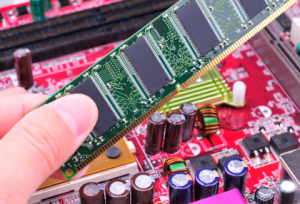The first part of this series about upgrading CAD software and hardware talked about using the Information Technology Lifecycle to help define how computer software and hardware can support your company's business goals. These first three steps help you define the needs and measure your current productivity levels.
Step 1
Read More
Topics:
Workstations,
RAM,
Hardware,
Displays,
Graphics Card,
Hard Drive,
Processors,
Operating Systems,
GPU,
Memory,
Graphics Cards,
Mobile Workstations,
Connectivity,
Video Cards,
Operating System,
Laptops,
Windows,
Display,
CAD
Spring has sprung, and with it comes the buzz that surrounds all the announcements of new CAD software, workstations, and other hardware that burst onto the scene this time of year. As a CAD user or manager, you might be eyeing these new products and considering the benefits of upgrading. However, as is often the case, your IT department has different ideas about how your computer system should work. Here are some tips from the perspective of a systems integrator about how to speak the language of the IT professional and improve your chances of getting the hardware and software updates you need.
Read More
Topics:
Workstations,
RAM,
Hardware,
Displays,
Graphics Card,
Hard Drive,
Processors,
Operating Systems,
GPU,
Memory,
Graphics Cards,
Mobile Workstations,
Connectivity,
Upgrade,
Video Cards,
Operating System,
Laptops,
Windows,
Display,
CAD
Autodesk 3ds Max and Autodesk 3ds Max Design software are applications for the creations of special effects for TV and movies, video games and design visualization assets. With such broad capabilities, the software's systems requirements reflect the diverse aspects of this powerful tool.
Read More
Topics:
Workstations,
Autodesk,
RAM,
Hardware,
Graphics Card,
Multi-Threading,
Hard Drive,
Processors,
GPU,
Memory,
Graphics Cards,
3ds Max Design,
Video Cards,
Operating System,
64-Bit,
CAD
In Part One of this series, I talked about how 17-inch mobile workstations aren’t really mobile, but rather desktop workstation replacements that you bring to a stable destination, plug in and go to town. In Part Two, I outlined the features I would look for when selecting my 17-inch mobile workstation.
Read More
Topics:
RAM,
Hardware,
Processors,
GPU,
Memory,
Mobile Workstations,
Video Cards,
Laptops,
CAD
In part 1 of Hardware for the CAD Professional, we reviewed the basics of system requirements. In part 2, we defined some commonly used terms. In part 3, we talked about processors and how they can affect your workflow. Now let's talk about one of the most common hardware-related questions: How much RAM do I need?
Read More
Topics:
Workstations,
RAM,
Hardware,
Memory,
CAD
In part 1 of Hardware for the CAD Professional, we reviewed the basics of system requirements. Now let’s look at some commonly used terms. We often hear entry level, mid-range, and high-end applied to workstations, without any clear definitions of what these mean and where the borderline between each of these categories lies. It helps to look at what each workstation is going to be best suited to do.
Read More
Topics:
Workstations,
RAM,
Hardware,
Operating Systems,
Memory,
Video Cards,
Operating System,
Windows,
CAD
At Cadalyst we often hear questions regarding the hardware end of the equation, particularly about the system requirements to do useful work with the AutoCAD family of products. As a result, I’m starting this series of blog posts on hardware for the CAD professional, with each segment focusing on a specific area such as graphic cards, memory and hard disks.
Read More
Topics:
Workstations,
RAM,
Hardware,
32-Bit,
Operating Systems,
GPU,
Video Cards,
Operating System,
64-Bit,
Windows,
CAD
Autodesk Revit 2011 optimized file loading by using multiple CPU threads to transfer model data to RAM; maximizing the use of computational resources required to open a model. Since the slowest performing hardware in a computer is often static data storage, usually a hard drive, Revit employs an “in memory” data model, taking advantage of much faster RAM to manage the model in an editing session. Due to the constricted performance represented by hard drive access, it is recommended, that whenever possible, to prevent the underlying Windows operating system (OS) from caching active model data to the hard drive.
Read More
Topics:
Workstations,
Autodesk,
RAM,
Hardware,
Revit,
Memory,
Windows,
CAD











